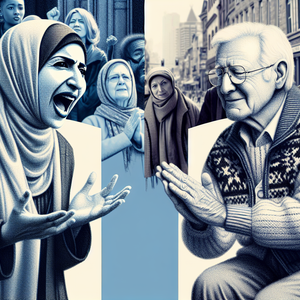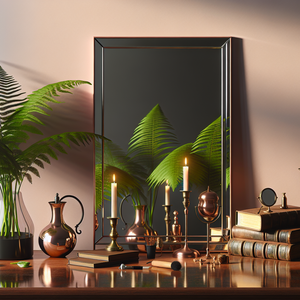Building Your Personal Brand as an Entry-Level UI/UX Designer

Personal branding goes beyond a flashy logo or a catchy tagline; it embodies the essence of who you are as a designer. For entry-level UI/UX designers, personal branding involves showcasing your design philosophy, technical skills, and passion for user-centered design. A well-defined personal brand enables you to connect with like-minded professionals, attract job opportunities, and build credibility in the industry.
1. Optimize Your LinkedIn Profile
LinkedIn serves as a vital tool for professionals across all sectors, and for aspiring UI/UX designers, it can be your most valuable asset. - **Professional Photo:** Start with a clear, professional headshot. Research shows that profiles with photos receive 21 times more profile views and 36 times more messages than those without. - **Compelling Headline and Summary:** Use your headline to convey your current status and future aspirations, such as “Aspiring UI/UX Designer | Passionate about User-Centered Design.” In your summary, share your background, what motivates your design process, and the types of opportunities you seek. - **Showcase Your Work:** Utilize the 'Featured' section to link to your portfolio, case studies, or design projects. Ensure these pieces represent your best work and highlight your thought process.
2. Create an Impressive Portfolio
Your portfolio is arguably the most crucial element of your personal brand. It should not only showcase your design skills but also narrate the story behind your work. - **Case Studies:** Include detailed case studies that illustrate your design process, from research and ideation to prototyping and testing. This approach demonstrates your ability to think critically and solve problems. - **Diversity of Projects:** Feature a variety of projects to display your range. This could include web designs, mobile applications, or personal projects that reflect your interests. - **User-Centric Focus:** Highlight how your designs prioritize user needs and experiences. This aligns with the foundational principles of UI/UX design and shows potential employers that you understand the user-centered approach.
3. Engage with the Design Community
Building connections within the design community can significantly enhance your visibility and credibility. - **Participate in Online Forums:** Engage in platforms like Dribbble, Behance, or Reddit design communities to share your work, gather feedback, and learn from others. - **Attend Networking Events:** Seek out local meetups, webinars, or design conferences. Networking in person can lead to valuable connections and job opportunities. - **Collaborate with Others:** Consider collaborating on projects with peers or participating in hackathons. This can provide valuable experience and expand your portfolio.
4. Leverage Social Media
Social media can be an effective way to showcase your personality and design skills. - **Twitter and Instagram:** Use these platforms to share your design journey, insights, and completed projects. Engaging with other designers and industry leaders can help you stay informed about trends and job openings. - **Consistency is Key:** Maintain a consistent aesthetic and voice across your social media channels. This reinforces your personal brand and makes it easier for others to recognize your work.
5. Continuous Learning and Improvement
A strong personal brand is not static; it requires ongoing development. - **Stay Updated on Trends:** Regularly read industry blogs, participate in online courses, and attend workshops to keep your skills sharp and relevant. Websites like Coursera, Udemy, and industry publications can serve as excellent resources. - **Seek Feedback:** Don’t hesitate to ask for constructive criticism from peers or mentors. This will not only help you grow as a designer but also show that you are committed to self-improvement.
Building a personal brand as an entry-level UI/UX designer is a crucial step toward achieving your career goals. By optimizing your LinkedIn profile, creating an impressive portfolio, engaging with the design community, leveraging social media, and committing to continuous learning, you can establish a distinctive presence that sets you apart in a crowded job market. Remember, your personal brand is a reflection of who you are as a designer—make it count! In a landscape where entry-level UI/UX designer jobs are plentiful yet competitive, investing time and effort into your personal brand can pave the way for a fulfilling career in design.
Junior UI Designer
Tech startups, digital agencies, e-commerce companies like Shopify and Squarespace
Core Responsibilities
Collaborate with senior designers to create intuitive user interfaces for web and mobile applications.
Develop wireframes, mockups, and prototypes to effectively communicate design ideas.
Conduct user research and usability testing to gather feedback and iterate on designs.
Required Skills
Proficiency in design tools like Sketch, Figma, or Adobe XD.
Basic understanding of HTML/CSS for better collaboration with developers.
Strong attention to detail and a passion for user-centered design.
UX Research Intern
Established tech companies like Google, Microsoft, Amazon, as well as research firms
Core Responsibilities
Assist in conducting user interviews, surveys, and usability tests to gather insights about user behavior.
Analyze qualitative and quantitative data to identify user needs and pain points.
Support the UX team in creating personas and user journey maps based on research findings.
Required Skills
Familiarity with research methodologies and tools such as UserTesting, Optimal Workshop, or Google Analytics.
Strong analytical and communication skills to present findings effectively.
A willingness to learn and adapt in a fast-paced environment.
Product Designer (Entry-Level)
Consumer tech companies, mobile app developers, SaaS companies like Slack and Trello
Core Responsibilities
Work across the entire product design process, from ideation to final execution.
Create visually appealing and functional designs while ensuring a seamless user experience.
Collaborate with product managers and engineers to align design with business goals and technical feasibility.
Required Skills
Proficiency in design software such as Adobe Creative Suite, Figma, or InVision.
Understanding of design systems and how to apply them in product design.
Strong problem-solving skills and an eye for aesthetics.
Interaction Designer
Gaming companies, tech giants like Apple and Adobe, and any organization focused on digital products
Core Responsibilities
Design interactive elements of applications, ensuring an engaging user experience.
Develop detailed interaction specifications and visual guidelines for developers.
Conduct A/B testing to evaluate design effectiveness and user engagement.
Required Skills
Solid understanding of interaction design principles and usability best practices.
Experience with prototyping tools such as Axure, Framer, or Principle.
Ability to think critically and iterate quickly based on user feedback.
Visual Designer
Advertising agencies, media companies, design studios like IDEO and Frog Design
Core Responsibilities
Create visually striking graphics and layouts for digital products, ensuring alignment with brand guidelines.
Produce high-fidelity mockups and design assets for web and mobile interfaces.
Collaborate with UX designers to ensure a cohesive user experience across all visual elements.
Required Skills
Expertise in graphic design software, including Adobe Photoshop, Illustrator, and InDesign.
Strong understanding of typography, color theory, and visual hierarchy.
Experience with responsive design principles for various devices.


